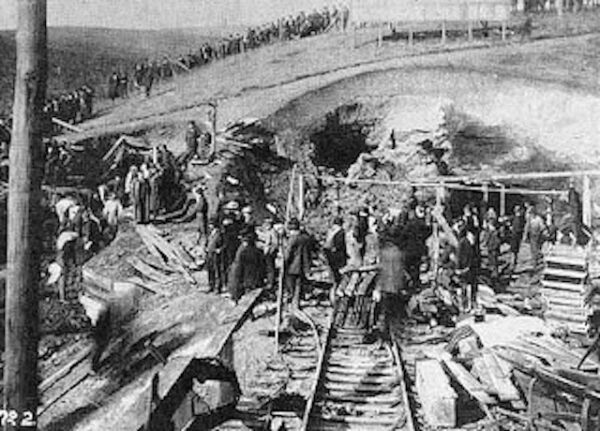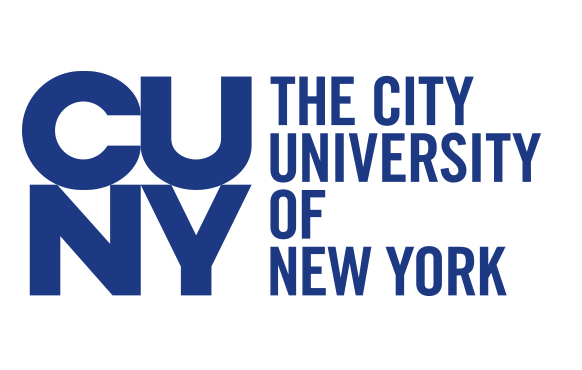New York, NY – The worst workplace disaster in American history took place 114 years ago, on Dec. 6, 1907. A coal-dust explosion at the Monongah Nos. 6 & 8 mines in northern West Virginia killed at least 362 people and probably more than 500.
About 10:30 that morning, a train of 14 cars was being winched up the tracks toward the coal tipple, where they would be emptied into railroad hopper cars. A coupling pin broke, and the cars, carrying roughly 30 to 40 tons of coal, accelerated back down the 1,300-foot slope and crashed into the mine entrance. The crash stirred up clouds of coal dust, which caught fire and blew up, possibly set off by sparks from downed wires or because miners had been using small explosive “shot charges” to break up the coal face. Some were killed immediately by the blast force, others burned to death, and others succumbed to smoke inhalation or suffocated in the “afterdamp,” oxygen-deprived air.

The blast was powerful enough to obliterate a brick powerhouse near the entrance and blow one victim’s body into the river, 600 feet away. Large accumulations of coal dust are “more explosive than dynamite,” says United Mine Workers of America press secretary Phil Smith. There were few laws regulating dust accumulation or ventilation — digging coal releases a significant amount of methane — and they were poorly enforced.
The exact toll at Monongah will never be known. The Fairmont Coal Company, the mine’s owner, calculated 362 dead, including three rescuers who suffocated, but no one knows how many miners were working that day. Because a large proportion of the coal diggers were paid piecework, per ton, they often hired others as subcontractors, off the books, to help. Many miners’ bodies were destroyed by the blast or sealed up in the mine, after it became clear that no survivors would be found and the air was too toxic for rescuers.
It was the worst mining disaster in an era when they were horribly routine. In the years between 1900 and 1918, there were at least ten that killed more than 150 people, and there were two more in the 1920s. That is more than the 146 workers who perished in the Triangle Shirtwaist factory fire in New York in 1911, which is justly known as one of the worst workplace disasters in American history, as its scenes of teenage girls leaping to their deaths to escape being burned alive brutally illustrated the human costs of employers short-cutting safety in the pursuit of profit and petty power.
More than 2,000 miners were killed on the job every year between 1905 and 1920 and again between 1923 and 1930, according to federal Mine Safety and Health Administration records. The worst year was 1907, when out of the nation’s roughly 680,000 miners, 3,242 — one out of every 210 — perished.
December 1907 was the deadliest month in the history of the U.S. mining industry, with at least 703 workers killed. On Dec. 19, less than two weeks after Monongah, an explosion at the Darr mine southeast of Pittsburgh killed 239 miners.
On May 1, 1900, more than 200 miners were killed in a coal-dust explosion at the Winter Quarters Number Four mine near Scofield, Utah. On May 19, 1902, all but three of the men in the East Tennessee town of Fraterville were among the roughly 200 who perished in a coal-mine explosion there. Methane explosions followed by afterdamp killed 169 at a mine in Chimney Springs, Wyoming in 1903; 181 in Cheswick, Pennsylvania in 1904; 154 in Marianna, Pennsylvania in 1908; and 180 at the Eccles Nos. 5 and 6 mines in southern West Virginia in 1914.
On Nov. 13, 1909, in Cherry, Illinois, a cart of hay for the mine’s mules was ignited by a kerosene lamp being used because the electricity for the lights was out; 259 miners were killed, and 20 more survived being trapped underground for eight days. On Oct. 22, 1913, an overcharged shot detonated accumulated coal dust at Phelps Dodge and Company’s Stag Canyon No. 2 mine in Dawson, New Mexico, killing 263 workers.
Bloody copper
The worst hard-rock mining disaster in American history coincided with a bitter labor dispute. On June 8, 1917, more than 160 miners were killed in a fire at the Granite Mountain and Speculator copper mines in Butte, Montana, owned by Anaconda Copper. The mines’ bulkheads were solid concrete, with no escape hatches, and some of the dead men had ground their fingers down to the knuckle trying to scrape through them.
The mines in the area had been unionized since the 1880s, and Butte was nicknamed “the Gibraltar of unionism.” But in 1914, Anaconda and the other copper companies in the area terminated their recognition of the Western Federation of Miners’ Butte local. Six days after the fire, the newly formed Metal Mine Workers declared a strike, demanding a union shop, an end to the companies blacklisting workers, a $6-a-day wage, and safety measures.
Frank Little, an organizer for the militant Industrial Workers of the World, was kidnapped by six men and murdered on August 1, hours after the federal prosecutor for Montana told Anaconda officials there were no legal grounds to arrest him. No one was ever prosecuted. The strike petered out in December.
Little-known history
The disasters at Monongah, Cherry, and elsewhere generated enough outrage for Congress to pass a law establishing the federal Bureau of Mines in 1910, to promote safer mining practices. However, mine-safety expert Davitt McAteer noted in his book Monongah, the federal government did not gain legal jurisdiction to regulate mining until a 1937 Supreme Court decision.
But this history is scarcely known “outside the coalfields,” says Smith. That’s partly because “the powers that be bury workers’ history,” and partly because these disasters happened far from the big newspapers of New York, Chicago, Philadelphia, and Washington.
The Triangle Fire was covered “rightly so” as an epochal disaster by the New York press, he adds.
But one reason why it had such an impact, why it could become such a big story, was that reporters on the scene could have a copy boy run their notes to newsrooms less than two miles away (as my grandfather, then a 15-year-old immigrant from what is now Belarus, did for the New York World during the fire). In contrast, the mines were in remote areas of the Appalachians and the Rockies, and often in company towns. At Monongah, company guards controlled access to the rail spur from Fairmont, the nearest big town.
“Even now, it’s hard to get to the coal mines,” says Smith.
Editor’s Note: This is part one of a two-part LaborPress series.



